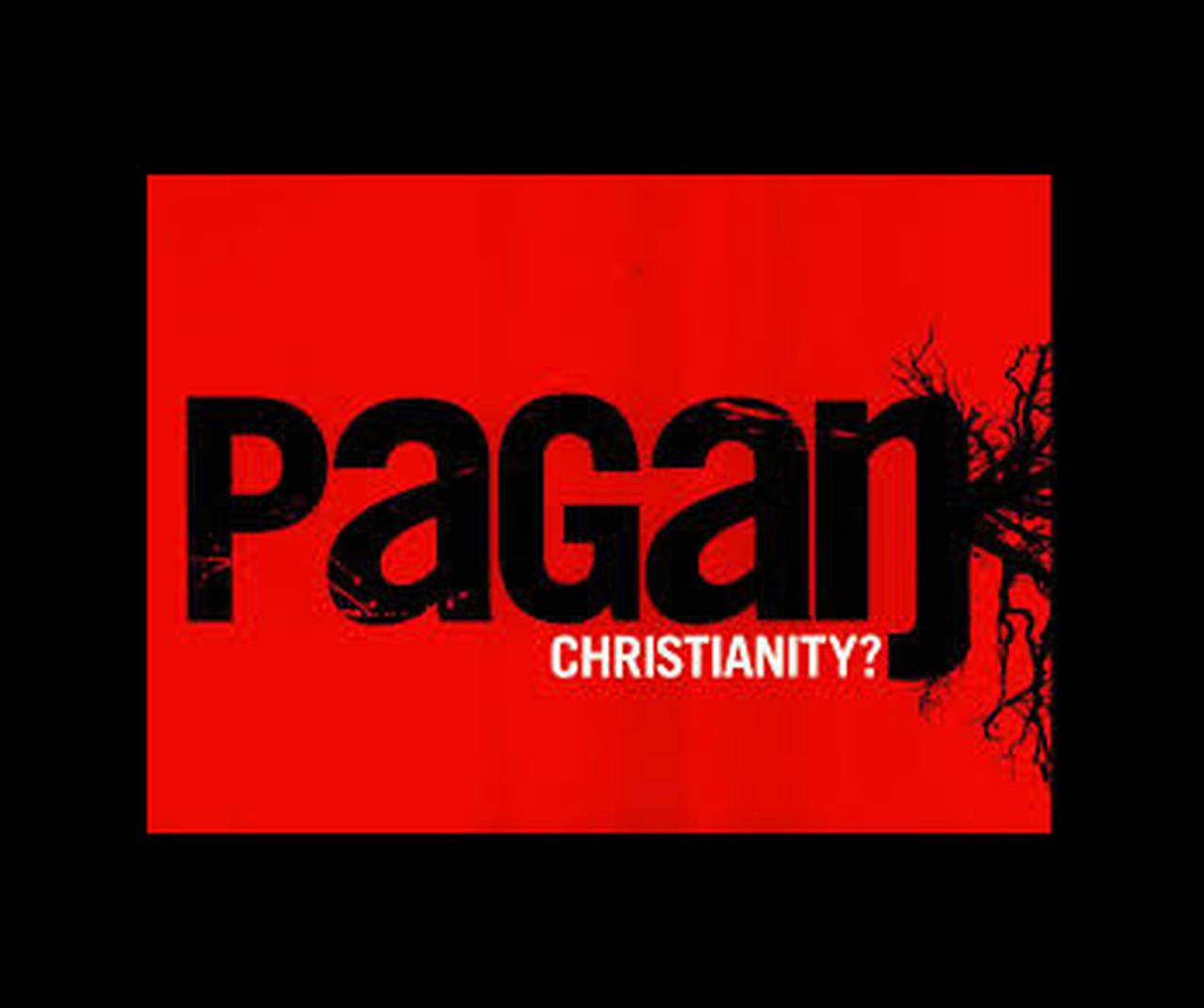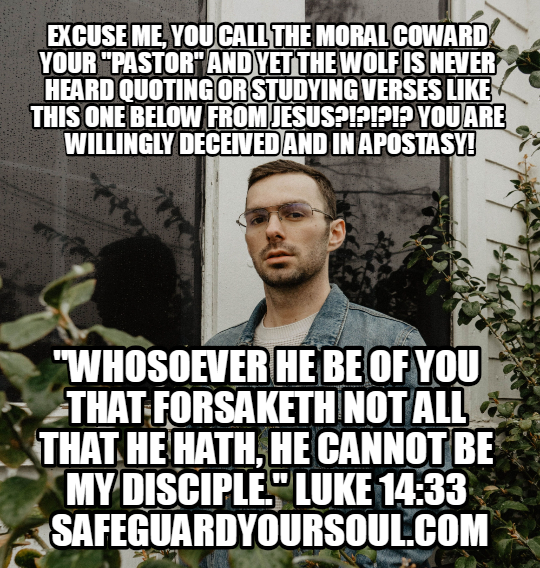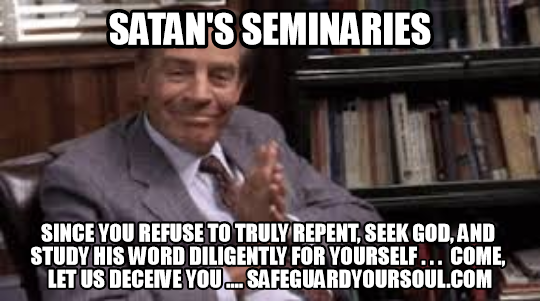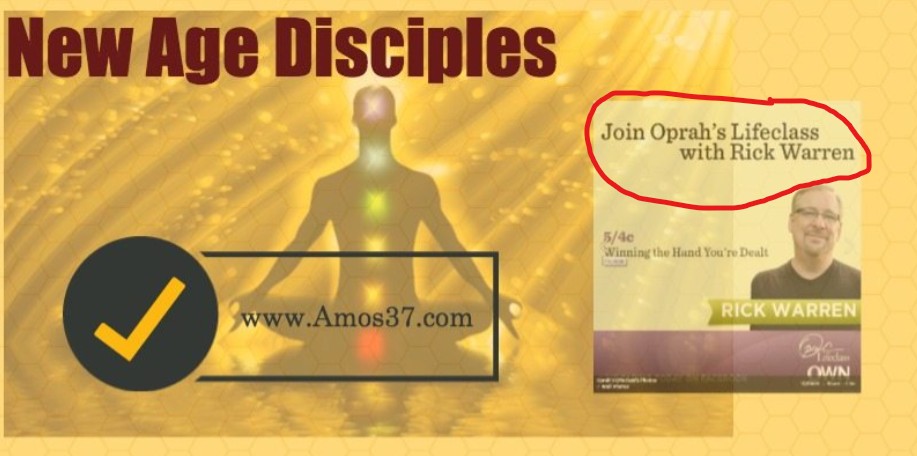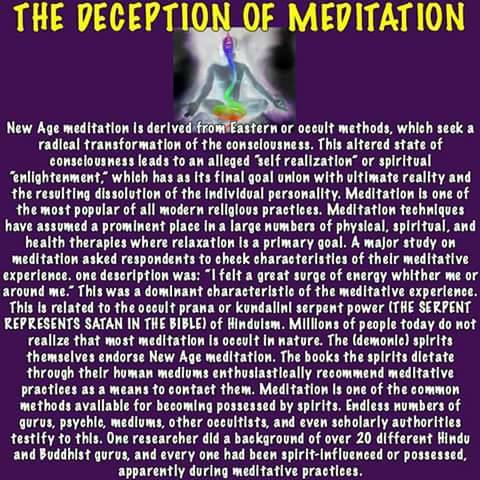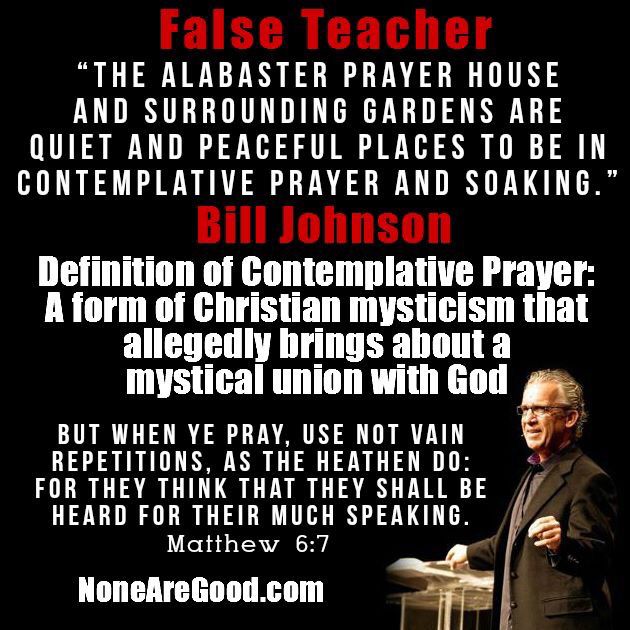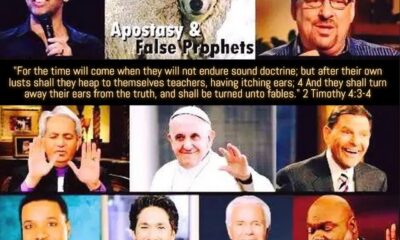“This book has shocked me to the core. No wonder the writer warns that ‘if you are not willing to have your Christianity seriously examined do not read this book. Spare yourself the trouble of having your Christian life turned upside down!’ Wow. I think this book just took my Christianity to a whole new level of understanding! I am shell shocked that I did not know any of this. Every Christian should read this book. If they dare.” Karen Cochran
Pagan Christianity by Frank Viola and George Barna
“The Christian faith was born in believer’s homes, yet every Sunday morning, scores of Christians sit in a building with pagan origins that is based upon Pagan Philosophy”.
“We somehow have been taught to feel holier when we are in ‘the house of God’ and have inherited a pathological dependency upon edifice to carry out our worship to God”.
“We are doing great damage to the message of the New testament by calling man made buildings ‘churches’.
“The order of worship includes threefold structure: (1) singing, (2) the sermon, and (3) closing prayer or song. This order of worship is viewed as sacrosanct in the eyes of many present-day Christians. But why? Again, it is due simply to the titanic power of tradition. And that tradition has set the Sunday morning order of worship in concrete … never to be moved”.
“As Will Durant, author of The Story of Civilization put it, Pagan isles remained in the spreading Christian sea. This was a tragic shift from the primitive simplicity that the church of Jesus Christ first knew”.
“We so easily forget that the early Christians turned the world upside down without them”.
“Our study of the liturgical history of the Lutheran (sixteenth century), Reformed (sixteenth century), Puritans (sixteenth century), Methodists (eighteenth century), Frontier-Revivalists (eighteenth to nineteenth centuries), and Pentecostals (twentieth century) uncovers one inescapable point: For the last five hundred years, the Protestant order of worship has undergone minimal change”. Pg.73 .
“As one author put it, ‘The Reformers accepted in substance the ancient Catholic pattern of worship…the basic structures of their services were almost universally taken from the late medieval orders of various sorts'”. pg 74
“In the end, then, the Reformers reformed the Catholic liturgy only slightly. Their main contribution was in changing the central focus. In the words of one scholar, ‘Catholicism increasingly followed the path of the (pagan) cults in making a rite the center of its activities, and Protestantism followed the path of the synagogue in placing the book at the center of it’s services’. Unfortunately, neither Catholics nor Protestants were successful in allowing Jesus Christ to be the center and head of their gatherings. Nor were they successful at liberating and unleashing the body of Christ to minister one to another in the gathering, as the New Testament envisions”. pg 74
“Because of the Reformation the Bible replaced the Eucharist and the Pastor replaced the priest. But there is still a directing of God’s people, rendering them as silent spectators. The centrality of the Author of the book was never restored. Hence, the Reformers dramatically failed to put their finger on the nerve of the original problem: a clergy-led worship service attended by a passive laity. It is not surprising, then, that the Reformers viewed themselves as reformed Catholics”. pg. 74
“Not only is the traditional order of service unscriptural and heavily influenced by paganism (which runs contrary to what is often preached from the pulpit), it does not lead to the spiritual growth God intended”. pg 75
“The Protestant order of worship represses mutual participation and growth of Christian community. It puts a choke hold on the functioning of the body of Christ by silencing its members. There is absolutely no room for anyone to give a word of exhortation, share an insight, start or introduce a song, or spontaneously lead a prayer. You are forced to be a muted, staid pew holder! You are prevented from being enriched by the other members of the body as well as being able to enrich them yourself”. pg 75
The Protestant order of worship strangles the headship of Jesus Christ. The entire service is directed by one person. You are limited to the knowledge, gifting, and experience of one member of the body- the Pastor. Where is the freedom for our Lord Jesus to speak through his body at will? Where in the liturgy may God give a brother or sister a word to share with the whole congregation? The order of worship allows for no such thing. Jesus Christ has no freedom to express Himself through His body at his discretion. He too is rendered a passive spectator”. pg 76
“Every Sunday you attend the service to be bandaged and recharged like all the other wounded soldiers. Far to often, however, the bandaging and the recharging never takes place. The reason is quite simple. The New Testament never links sitting through an ossified ritual that we mislabel “church” as having anything to do with spiritual transformation. We grow by functioning, not by passively watching and listening”. pg 77
“Let’s face it. The Protestant order of worship is largely unscriptural, impractical, and unspiritual. It has no analog in the New Testament. Rather, it finds its roots in the culture of fallen man. It rips at the heart of primitive Christianity, which was informal and free of ritual. Five centuries after the Reformation, the Protestant order of worship still varies little from Catholic Mass-a Religious ritual that is a fusion of pagan and Judaistic elements” pg. 77
“In fact, when the church functions as she should, she is the greatest evangelism known to humankind. When God’s people are living in authentic community, their lives together are a sign to the world of God’s coming reign”. pg. 82
“Remove the sermon and you have eliminated the most important source of spiritual nourishment for countless numbers of believers (so it is thought). Yet the stunning reality is that today’s sermon has no root in Scripture. Rather, it was borrowed from pagan culture, nursed and adopted into the Christian faith”. pg. 86
“The New Testament letters show that ministry of God’s Word came from the entire church in their regular gatherings. From Romans 12: 6-8, 15: 14, 1 Corinthians 14:26, and Colossians 3:16, we see that it included teaching, exhortation, prophecy, singing, and admonishment. This “every-member” functioning was also conversational (1 Corinthians 14:29) and marked by interruptions (1 14:30). Equally so, the exhortation of the local elders were normally impromptu.
In Short, the contemporary sermon delivered for Christians consumption is foreign to both Old and New Testaments. There is nothing in Scripture to indicate it’s existence in the early Christian gatherings”. pg. 88
“The Christian sermon was borrowed from the pagan pool of Greek culture”! pg. 89
“The sermon was conceived in the womb of Greek rhetoric. It was born into the Christian community when pagans-turned-Christians began to bring their oratorical styles of speaking into the church. By the third century, it became common for Christian leaders to deliver a sermon. By the fourth century it became the norm”. pg.101
“Nevertheless, despite the fact that the contemporary sermon does not have a shred of biblical merit to support it’s existence, it continues to be uncritically admired in the eyes of most present-day Christians. It has become so entrenched in the Christian mind that most Bible-believing pastors and Laymen fail to see that they are affirming and perpetuating an unscriptural practice out of sheer tradition. The sermon has become permanently embedded in a complex organizational structure that is far removed from the first-century church life”. pg. 102
“The first-century church planters had a deep and profound revelation(or insight) of Jesus Christ. They knew him, and they knew him well. He was their life, their breath, and their reason for living. They, in turn, imparted that same revelation to the churches they planted. John 1: 1-3 is a good example of this dynamic .
Paul of Tarsus preached a message of Christ that was so profound that it caused immoral, blood-drinking pagans to become full-fledged Christians in love with Jesus Christ in just a few short months. (These new believers made up the churches of Pisidian, Antioch, Iconium, Lystra, Derbe, Philippi, Thessalonica, and Berea (Acts13-17). Paul shared the depths of Christ with them in such a way that they knew that they were holy in His eyes and that they could know Him internally, for Christ indwelt them. This profound, personal understanding of the indwelling Christ affected how they gathered together and what they did in those gatherings.
Furthermore, Paul typically spent several months with these new converts then left them on their own for long periods of time, sometimes years. And when he returned, they were still gathering together, still loving one another, and still following their Lord.
What kind of gospel did he preach to cause this kind of remarkable effect? He called it “the unsearchable riches of Christ” (Ephesians 3:8) To put it another way, he submerged them in a revelation of Jesus Christ”. pg.103
“THE PASTOR. He is the fundamental figure of the Protestant faith. So prevailing is the pastor in the minds of most Christians that he is often better known, more highly praised, and more heavily relied upon than Jesus Christ himself!
Remove the pastor and most Protestant churches would be thrown into a panic. Remove the pastor, and Protestantism as we know it would die. The pastor is the dominating focal point, mainstay, and centerpiece of the contemporary church. He is the embodiment of Protestant Christianity”. pg. 106
“With the fall came an implicit desire in people to have a physical leader to bring them to God. For this reason, human societies throughout history have consistently created a special caste of revered Religious leaders. The medicine man, the shaman, the rhapsodist, the miracle worker, the witch doctor, the soothsayer, the wise man, and the priest have all been with us since Adam’s blunder. And this person is always marked by special training, special garb, a special vocabulary, and special way of life”. pg.108
“Up until the second century, the church has no official leadership. That it had leaders is without dispute. But leadership was unofficial in the sense that there were no religious “offices” or sociological slots to fill. New Testament scholarship makes this abundantly clear.
In this regard, the first-century churches were an oddity indeed. They were religious groups without priests, temple, or sacrifice. The Christians themselves led the church under Christ’s direct headship. Leaders were organic, untitled, and were recognized by their service and spiritual maturity rather than by a title or an office.
Among the flock were the elders(shepherds or overseers). These men all had equal standing. There was no hierarchy among them. Also present were extra-local workers who planted churches. These were called the “sent ones” or apostles. But they did not take up residency in the churches for which they cared. Nor did they control them. The vocabulary of the New Testament leadership allows no pyramidal structures. It is rather a language of horizontal relationships that includes exemplary action”. pg.110
“Because the presbyters were the ones administering the Lord’s Supper, they began to be called priests. More startling, the bishop came to be regarded as the high priest who could forgive sins! All of these trends obscured the New Testament reality that all believers are priests unto God.
By the fourth century, this graded hierarchy dominated the Christian faith. The clergy caste was now cemented. At the head of the church stood the bishop. Under him was the college of presbyters. Under them stood the deacons. And under all of them were the Laymen. One-bishop rule became the accepted form of church government throughout the Roman Empire. (During this time, certain churches began to exercise authority over other churches-thus broadening the hierarchical structure)”. pg.115
“Strikingly, only three passages in the New Testament tell us that elders were publicly recognized. Elders were acknowledged in the churches in Galatia (Acts 14: 23). Paul had Timothy acknowledge elders in Ephesus (1 Timothy 3:1ff). He also told Titus to recognize them in the churches in Crete (Titus 1:5ff).
The word ordain (KJV) in these passages does not mean to place into office. It rather carries the idea of endorsing, affirming, and showing forth what has already been happening. It also conveys the thought of blessing. Public recognition of elders and ministries was typically accompanied by the laying on of hands by apostolic workers. (In the case of workers being sent out, this was done by the church or the elders).
In the first century, the laying on of hands merely meant the endorsement or affirmation of function, not the installment into an office or the giving of special status. Regrettably, it came to mean the latter in the late second and early third centuries.
During the third century, ordination took on an entirely different meaning. It was a formalized Christian rite. By the fourth century, the ceremony of ordination was embellished by the symbolic garments and solemn ritual. Ordination produced an ecclesiastical caste that usurped the believing priesthood.
From where did Christians get their pattern of ordination? They patterned their ordination ceremony after the Roman custom of appointing men to civil office. The entire process, down to the very words, came straight from the Roman civic world”. pgs.124-125
“The contemporary practice of ordination creates a special caste of Christian. Whether it be the priest in Catholicism or the pastor in the Protestantism, the result is still the same: The most important ministry is restricted to a few”special” believers.
Such an idea is as damaging as it is nonscriptural. The New Testament nowhere limits preaching, baptizing, or distributing the Lord’s Supper to the “ordained”. Eminent scholar James D. G. Dunn put it best when he said that the clergy-laity tradition has done more to undermine New Testament authority than most heresies.
Since church office could only be hold through the rite of ordination, the power to ordain became the crucial issue in holding religious authority. The biblical content was lost. And proof-texting methods were used to justify the clergy/laity hierarchy. Perhaps the best-known example is the early Catholics’ use of Matthew 16 to justify the creation of a papal system and the doctrine of apostolic succession. The result: Ordinary believers, generally uneducated and ignorant, were at the mercy of a professional clergy”. pg.127
“The New Testament word for minister is diakonos. It means ‘servant’. But this word has been distorted because men have professionalized the ministry. We have taken the word minister and equated it with the pastor, with no scriptural justification whatsoever. In like manner, we have mistakenly equated preaching and ministry with pulpit, sermon, again without biblical justification”. pg.136
“The unscriptural clergy/laity distinction has done untold harm to the body of Christ. It has divided the believing community into first and second-class Christians. The clergy/laity dichotomy perpetuates an awful falsehood-namley, that some Christians are more privileged than others to serve the Lord.
The one-man ministry is entirely foreign to the New Testament, yet we embrace it while it suffocates our functioning. We are living stones, not dead ones. However, the pastoral office has transformed us into stones that do not breathe.
Permit us to get personal. We believe the pastoral office has stolen your right to function as a full member of Christ’s body. It has distorted the reality of the body, making the pastor a giant mouth and transforming you into a tiny ear. It has rendered you a mute spectator who is proficient at taking sermon notes and passing an offering plate.
But that is not all. The modern-day pastoral office has overthrown the main thrust of the letter to the Hebrews-the ending of old priesthood. It has made ineffectual the teaching of 1 Corinthians 12-14, that every member has both the right and the privilege to minister in a church meeting. It has voided the message of 1 Peter 2 that every brother and sister is a functioning priest”. pg. 136
“But there is something more. The contemporary pastorate rivals the functioning headship of Christ in his church. It illegitimately holds the unique place of centrality and headship among God’s people, a place that is reserved for only one Person-the Lord Jesus. Jesus Christ is the only head over a church and the final word to it. By his office, the pastor displaces and supplants Christ’s headship by setting himself up as the church’s human head”. pg. 137
“The contemporary pastor is the most unquestioned fixture in the twenty-first century Christianity. Yet not a strand of Scripture supports the existence of this office.
Rather, the present-day pastor was born out of the single-bishop rule first spawned by the Ignatius and Cyprian. The bishop evolved into the local presbyter. In the Middle Ages, the presbyter grew into the the Catholic priest. During the Reformation, he was transformed into the “preacher”, “the minister”, and finally “the pastor”-the person upon whom all of the Protestantism hangs. To boil it down to one sentence: The Protestant pastor is nothing more than a slightly reformed Catholic priest. (Again, we are speaking of the office and not the individual.)
Catholic priests had seven duties at the time of the Reformation: preaching; the sacraments; prayers for the flock; a disciplined, godly life; church rites; supporting the poor; and visiting the sick. The Protestant pastor takes upon himself all of these responsibilities-plus he sometimes blesses civic events.
The famed poet John Milton put it best when he said, “New presbyter is but old priest writ large!” In other words, the contemporary pastor is but an old priest written in large letters! ” pg. 141
“Leading up to the sermon, those who “lead worship” select the songs that are to be sung. They begin those songs. They decide how those songs are to be sung. And they decide when those songs are over. Those sitting in the audience in no way, shape, or form lead the singing. They are led by someone else who is often part of the clerical staff-or who has similar stature.
This is in stark contrast to the first-century way. In the early church, worship and singing were in the hands of all of God’s people. The church herself led her own songs. Singing and leading songs was a corporate affair, not a professional event led by specialists”. pg. 158
“In 1962, a group of dissatisfied British church musicians in Dunblane, Scotland, tried to revitalize traditional Christian songs. Led by Congregational minister Erik Routley, these artists were influenced by Bob Dylan and Sydney Carter. George Shorney Jr.of Hope Publishing Company brought their new style to the United States. These new Christian hymns were a reform, but not a revolution. The revolution came when rock and roll was adapted into Christian music with the coming of the Jesus movement. This reform set the stage for the revolutionary musical changes to take root in the Christian church through Calvay Chapel and the Vineyard.
The origin of the worship team goes back to the founding Calvary Chapel in 1965. Chuck Smith, the founder of the denomination, started a ministry for hippies and surfers. Smith welcomed the newly converted hippies to retune their guitars and play their now redeemed music in church. He gave the counterculture a stage for their music in church .He gave the counterculture a stage for their music-allowing them to play Sunday night performances and concerts. The new musical forms began to be called “praise and worship”. As the Jesus movement began to flourish, Smith founded the record company Maranatha Music in the early 1970s. It’s goal was to distribute the songs of these young artists.
In due time, the guitar replaced the organ as the central instrument that led worship in the Protestant church. Although patterned after the rock concert of secular culture, the worship team has become as common as the pulpit”. pg. 166
“I (Frank) am no theoretician. For almost twenty years I have gathered with churches where every member has been trained to start a song spontaneously. Imagine: Every brother and sister free to lead songs under the headship of Jesus Christ-even to write his or her own songs and bring them to the meeting for all to learn. I have met with numerous churches that have experienced this glorious dynamic. Someone starts a song and everyone joins in. Then someone else begins another song, and so worship continues without long pauses and with no visible leader present.
This is exactly how the first-century Christians worshipped, by the way. Yet it is a rare experience in the modern-day institutional church. The good news is that it is possible and available for all who wish to experience Christ’s headship through song in a church meeting. The singing in such churches is intensely corporate rather than individualistic and subjective”. pg 167
“Tithing is mentioned only four times in the New Testament. But none of these instances apply to Christians. Tithing belonged to the Old Testament era where a taxation system was needed to support the poor and a special priesthood that had been set apart to minister to the Lord. With the coming of Jesus Christ, there has been a “change of the law”-the old has been “set aside” and rendered obsolete by the new (Hebrews 7:12-18, 8:13
We are all priests now-free to function in God’s house. The law, the old priesthood, and the tithe have all been crucified. There is now no Temple curtain, no Temple tax and no special priesthood that stands between God and man. You have been set free from the bondage of tithing and from the obligation to support the umbilical clergy system. May you, like the first-century Macedonian Christians, give freely, out of a cheerful heart, without guilt, religious obligation, or manipulation… generously helping those in need (2 Corinthians 8:1-4; 9:6-7)”. pg. 183
“In the early church, converts were baptized immediately upon believing. One scholar says of baptism and conversion, “They belong together. Those who repented and believed the Word were baptized. That was the invariable pattern, so far as we know.” Another writes “At the birth of the church, converts were baptized with little or no delay.”
In the first century, water baptism was the outward confession of a person’s faith. But more than that, it was the way someone came to the Lord. For this reason, the confession of baptism is vitally linked to the exercise of saving faith. So much so that the New Testament writers often use baptism in place of the word faith and link it to being “saved”. This is because baptism was the early Christian’s initial confession of faith in Christ.
Baptism accompanied the acceptance of the gospel. For example, when Lydia heard Paul preach the gospel, she believed and was immediately baptized with her household (Acts 16:14-15). In the same way, when Paul led the Philippian jailor and his household to the Lord, they were immediately baptized (Acts 16:30-33). This was the New Testament pattern (see Acts 2:41, 8:12, 35-37). Baptism marked a complete break with the past and full entrance into Christ and His church. Baptism was simultaneously an act of faith as well as an expression of faith.” pgs. 188-189.
“Through our tradition, we have evacuated the true meaning and power behind water baptism. Properly conceived and practiced, water baptism is the believer’s initial confession of faith before men, demons, angels, and God. Baptism is a visible sign that depicts our separation from the world, our death with Christ, the burial of our old man, the death of the old creation, and the washing of the Word of God.
Water baptism is the New Testament form of conversion-initiation. It is God’s idea. To replace it with the human-invented sinners prayer is to deplete baptism of its God-given testimony.
In the same vein , the Lord’s Supper, when separated from its proper context of full meal, turns into a strange, pagan-like rite.The supper has become an empty ritual officiated by a clergyman, rather than a shared-life experience enjoyed by the church. It has become a morbid religious exercise, rather than a joyous festival-a stale individualistic ceremony, rather than a meaningful cooperate event.
As one scholar put it, “It is not in doubt that the Lord’s Supper began as a family meal or meal of friends in a private house… the Lord’s Supper moved from being a real meal into being a symbolic meal…the Lord’s Supper moved from bare simplicity to elaborate slender…the celebration of the Lord’s Supper moved from being a lay function to a priestly function. In the New Testament itself, there is no indication that it was the special privilege or duty of anyone to lead the worshipping fellowship in the Lord’s Supper”. pgs 196-197
“In the minds of most Christians, formal Christians education qualifies a person to do the Lord’s work. Unless a Christian has graduated from Bible College or seminary, he or she is viewed as being a “para”-minister. A pseudo Christian worker. Such a person cannot preach, teach, baptize, or administer the Lord’s Supper since he or she has not been formally trained to do such things…right?
The idea that a Christian worker must attend Bible college or seminary to be legitimate is deeply ingrained-so much so that when people feel a “call” of God on their lives, they are conditioned to begin hunting for a Bible College or seminary to attend
Such thinking fits poorly with the early Christian mind-set. Bible colleges, seminaries, and even Sunday Schools were utterly absent from the early church. All are human innovations that came hundreds of years after the Apostles’ death.
How, then, were Christian workers trained in the first century if they did not go to a religious school? Unlike today’s ministerial training, first-century training was hands-on, rather than academic. It was a matter of apprenticeship, rather than of intellectual learning. It was aimed primarily at the spirit, rather than at the frontal lobe.
In the first century, those called to the Lord’s work were trained in two ways:(1) They learned the essentials lessons of Christian ministry by living a shared life with a group of Christians. In other words, they were trained by experiencing body life as nonleaders. (2) They learned the Lord’s work under the tutelage of an older, seasoned worker.” pgs.199-200
“The teaching of the New Testament is that God is Spirit, and as such, He is known by revelation ( spiritual insight) to one’s human spirit. Reason and intellect can cause us to know about God. And they help us to communicate what we know. But they fall short in giving us spiritual revelation. The intellect is not the gateway for knowing the Lord deeply. Neither are emotions. In the words of A.W.Tozer: “Divine truth is of the nature of the spirit and for that reason can be only by spiritual revelation…God’s thoughts belong to the world of spirit, man’s to the world of intellect, and while spirit can embrace intellect, the human intellect can never comprehend spirit.
…Man by reason cannot know God; he can only know about God.
… Man’s reason is a fine instrument and useful within its field. It was not given as an organ by which to know God.” pg. 206
“Instead of offering the cure to the ills of the church, our theological schools worsen them by assuming ( and even defending) all of the unscriptural practices that produce them.
The words of one pastor sum up the problem nicely: “I came through the whole system with the best education that evangelicalism had to offer-yet I really didn’t receive the training that I needed… seven years years of higher education in top-rated evangelical schools didn’t prepare me to (1) do ministry and (2) be a leader. I began to analyze why I could preach a great sermon and people afterwards would shake my hand and say, ‘Great Sermon, Pastor.’ But these were the very people who were struggling with self-esteem, beating their spouses, struggling as workaholics, succumbing to their addictions. Their lives weren’t changing. I had to ask myself why this great knowledge I was presenting didn’t move from their
heads to their hearts and their lives. And I began to realize that breakdown in the church was actually based on what we learned in seminary. We were taught that if you just give people information, that’s enough!” pg. 218
“WHY IS IT THAT WE CHRISTIANS can follow the same rituals every Sunday without ever noticing that they are at odds with the New Testament? The incredible power of tradition has something to do with it As we have seen, the church has often been influenced by the surrounding culture, seemingly unaware of it’s negative effects. At other times, it has, quite properly, recognized overt threats- such as heretical teachings about the person and divinity of Jesus Christ. But in an effort to combat those threats, it has moved away from the organic structure that God wrote into the church’s DNA .
But there is something else- something more fundamental that most Christians are completely unaware of. It concerns our New Testament. The problem is not in what the New Testament says. The problem is in how we approach it.
The approach most commonly used among contemporary Christians when studying the Bible is called “proof texting”. The origin of proof texting goes back to the 1590s. A group of men called Protestant scholastics took the teachings of the Reformers and systematized them according to the rules of Aristotelian logic.
The Protestant scholastics held that not only is the Scripture the Word of God, but every part of it is the Word of God in and of itself-irrespective of context. This set the stage for the idea that if we lift a verse out of the bible, it is true in it’s own right and can be used to prove a doctrine or a practice.
When John Darby emerged in the mid-1800s, he built a theology based on this approach. Darby raised proof texting to an art form. In fact, it was Darby who gave fundamentalist and evangelical Christians a good deal of their presently accepted teachings. All of them are built on the proof-texting method. Proof texting, then, became the common way that we contemporary Christians approach the Bible.
As a result, we Christians rarely, if ever, get to see the New Testament as a whole. Rather, we are served up a dish of fragmented thoughts that are drawn together by means of fallen human logic. The fruit of this approach is that we have strayed far afield from the practice of the New Testament church. Yet we still believe we are being biblical”. pgs 222-223
“Seminaries and Bible college students alike are rarely if ever given a panoramic view of the free-flowing story of the early church with the New Testament books arranged in chronological order. As a result, most Christians are completely out of touch with the social and historical events that lay behind each of the New Testament letters Instead, they have turned the New Testament into a manual that can be wielded to prove any point. Chopping the Bible up into fragments makes this relatively easy to pull off.
.We Christians have been taught to approach the Bible in one of eight ways. See how many that apply to you, you can tick off with a pencil:
.You look for verses that inspire you. Upon finding such verses, you either highlight, memorize, meditate upon, or put them on your refrigerator door.
.You look for verses that tell you what God has promised so that you can confess it in faith and thereby obligate the Lord to do what you want.
.You look for verses that tell you what God commands you to do
.You look for verses that you can quote to scare the devil out of his wits or resist him in the hour of temptation..
.You look for verses that will prove your particular doctrine so that you can slice and dice your theological sparring partner into biblical ribbons. (Because of the proof-texting method, a vast wasteland of Christianity behaves as if the mere citation of some random, decontextualized verses of Scripture ends all discussion on virtually any subject).
.You look for verses in the bible to control and /or correct others.
. You look for verses that “preach” well and make good sermon material. (This is an ongoing addiction for many who preach and teach).
.You somethimes close your eyes, flip open the bible randomly, stick your finger on a page, read what the text says, and then take what you have read as a personal “word” from the Lord.
Now look at the list again.Which of these approaches have you used? Look again: Notice how each is highly individualistic. All of them put you, the individual Christian, at the center. Each approach ignores the fact that most of the New Testament was written to corporate bodies of people (churches), not to individuals.
But that’s not all. Each of those approaches is built on isolated proof texting. Each treats the New Testament like a manual and blinds us to its real message. It is no wonder that we can approvingly nod our heads at paid pastors, the Sunday morning order of worship, sermons, church buildings, religious dress, choirs, worship teams, seminaries, and a passive priesthood all without wincing.
We have been taught to approach the Bible like a jigsaw puzzle. Most of us have never been told the entire story that lies behind the letters that Paul, Peter, James, John, and Jude wrote. We have been taught chapters and verses, not the historical context.
For instance, have you ever been given the story behind Paul’s letter to the Galatians? Before nodding, see if you can answer these questions off the top of your head: Who were the Galatians? What were their issues? When and why did Paul write to them? What happened just before Paul penned his Galatian treatise? Where was he when he wrote it? What provoked him to write the letter? And where in Acts do you find the historical context for his letter? All of these background matters are indispensable for understanding what our New Testament is about. Without them, we simply cannot understand the Bible clearly or properly”. pgs. 229-231
“What do we mean by first-century styled church? It is group of people who know how to experience Jesus Christ and express Him in a meeting without any human officiation. Such a group of people can function organically together as a body when they are left on their own after the church planter leaves them. ( This does not mean that church planters never return. There are many times when they are needed to help the church. But after planting a church, church planters should be absent more than they are present.)
The one who plants a first-century styled church leaves that church without a pastor, elders, a music leader, a Bible facilitator, or a Bible teacher. If that church is planted well, those believers will know how to sense and follow the living, breathing headship of Jesus Christ in a meeting. They will know how to let Him invisibly lead their gatherings. They will bring their own songs, they will write their own songs, they minister out of what Christ has shown them-with no human leader present! What is described here is not an armchair philosophy. I (Frank) have worked with churches that fit this bill.
To equip people to do that takes a lot more than opening up your house and saying, “Come, let’s have Bible study”. pg. 234
“Unlike Christians today, the early Christians did not share Christ out of guilt, command, or duty. They shared Him because He was pouring out of them, and they could not help it! It was a spontaneous, organic thing-born out of life, not guilt.” pg.237
“We do well to pay attention to the way that churches were raised up in the first century. I believe that scripture holds for us enduring principles on this score. If you count all the churches mentioned in the New Testament, you’ll find about thirty-five. Everyone of them was planted or aided by a traveling church planter who preached only Christ. There were no exceptions. The church was raised up as a result of the apostolic presentation of Jesus Christ.” pg. 238
“Jesus was never a rabble-rouser nor a ranting rebel (Matthew 12:19-20). Yet He constantly defied the traditions of the scribes and Pharisees. And He did not do so by accident, but with great deliberation. The Pharisees were those who, for the sake of the “truth” as they saw I, tried to extinguish the truth they could not see. This explains why there was always a blizzard of controversy between the ‘tradition of the elders’ and the acts of Jesus.
Someone once said that ‘a rebel attempts to change the past; a revolutionary attempts to change the future’. Jesus Christ brought drastic change to the world. Change to man’s view of God …. Change to men’s view of women. Our Lord came to bring radical change to the old order of things, replacing it with a new order. He came to bring forth a new covenant – a new Kingdom – a new birth – a new race – a new species – a new new culture – and a new civilization.
As you read through the Gospels, behold your Lord, the Revolutionary. Watch him throw the Pharisees into a panic by intentionally flaunting their conventions. Numerous times Jesus healed on the Sabbath day, flatly breaking their cherished traditions. If the Lord wanted to placate His enemies, He could have waited until Sunday or Monday to heal some of these people. Instead, he deliberately healed on the Sabbath, knowing full well it would make His opponents livid.
This pattern runs deep. In one instance, Jesus healed a blind man by mixing clay with spittle and putting it in the man’s eyes. Such an act was in direct defiance of the Jewish ordinance that prohibited healing on the Sabbath by mixing mud with Spittle! Yet your Lord intentionally shattered this tradition publicly and with absolute resolve .Watch Him eat food with unwashed hands under the judgmental gaze of the Pharisees, again intentionally defying their fossilized tradition.
In Jesus we have a man who refused to bow to the pressures of religious conformity. A man who preached a revolution. A man who would not tolerate hypocrisy. A man who was not afraid to provoke those who suppressed the liberating gospel He brought to set men free. A man who did not mind evoking anger in His enemies, causing them to gird their thighs for battle”. pgs 244- 246
“For most Christians, this is a side of Jesus Christ they have never known before. Yet we believe it explains why exposing what is wrong with the contemporary church so that Christ’s body can fulfill God’s ultimate intention is so critical. It is simply an expression of our Lord’s revolutionary nature. The dominating aim of the nature is to put you and me at the center of the beating heart of God. To put you and me in the core of His eternal purpose – a purpose for which everything was created.
The early church understood that purpose. They not only understood God’s passion for His Church, they lived it out. And what did such body life look like?
- The early Christians were intensely Christ-centered. Jesus Christ was their pulse beat. He was their life, their breath, and their central point of reference. He was the object of their worship, the subject of their songs, and the content of their discussion and vocabulary. The New Testament church made the Lord Jesus Christ Central and supreme in all things.
- The New Testament church had no fixed order of worship. The early Christians gathered in open-participatory meetings where all believers shared their experience of Christ, exercised their gifts, and sought to edify one another. No one was a spectator. All were given the privilege and the responsibility to participate. The purpose of these church meetings was twofold. It was for the mutual edification of the body. It was also to make visible the Lord Jesus Christ through the every-member functioning of His body. The early church meetings were not religious “services”. They were informal gatherings that were permeated with an atmosphere of freedom, spontaneity, and joy. The meetings belonged to Jesus Christ and to the church; they did not serve as platform for any particular ministry or gifted person.
- The New Testament church lived as a face-to-face community. While the early Christians gathered for corporate worship and mutual edification, the church did not exist to merely meet once or twice a week. The New Testament believers lived a shared life. They cared for one another outside of scheduled meetings. They were, in the very real sense of the word, family.
- Christianity was the first and only religion the world has ever known that was void of ritual, clergy, and sacred buildings. For the first 300 years of the Church’s existence, Christians gathered in homes. On special occasions, Christian workers would sometimes make use of larger facilities (like Solomon’s Porch) {John 10:23, Acts 3:11} and the Hall of Tyrannus {Acts 19:9}. But they had no concept of a scared edifice nor of a spending large amounts of money on buildings. Nor would they ever call a building a “church” or the “house of God.” The only sacred building the early Christians knew was the one not made with human hands.
- The New Testament church did not have a clergy. The Catholic priest and the Protestant pastor were completely unknown. The church had traveling apostolic workers who planted and nurtured churches. But these workers were not viewed as being part of the a special clergy caste. They were part of the body of Christ, and they served the churches (not the other way around). Every Christian possessed different gifts and different functions, but only Jesus Christ had the exclusive right to exercise authority over his people. No man had that right. Eldering and Shepherding were just two of those gifts. Elders and Shepherds were ordinary Christians with certain gifts. They were not special offices. And they did not monopolize the ministry of the church meetings. They were simply seasoned Christians who naturally cared for the members of the church during times of crisis and provided oversight for the whole assembly.
- Decision making in the New Testament church fell upon the shoulders of the whole assembly. Traveling church planters would sometimes give input and direction. But ultimately, the whole church made decisions under the lordship of Jesus Christ. It was the church’s responsibility to find the Lord’s mind together and act accordingly.
- The New Testament church was organic, not organizational. It was not welded together by putting people into offices, creating programs, constructing rituals, and developing a top-down hierarchy or chain-of-command structure. The church was a living, breathing organism. It was born, it would grow, and it naturally produced all of what was in its DNA. That would include all the gifts, ministries, and functions of the body of Christ. In the eyes of God, the church is a beautiful woman. The bride of Christ. She was a colony from heaven, not a man-made organization from earth.
- Tithing was not a practice of the New Testament church. The early Christians used their funds to support the poor among them, as well as the poor in the world. They also supported traveling itinerant church planters so that the gospel could be spread and churches could be raised up in other lands. They gave according to their ability, not out of guilt, duty, or compulsion. Pastor/clergy salaries were unheard of. Every Christian in the church was a priest, a minister, and a functioning member of the body. (elders who labour in the word and doctrine to feed and equip Christ’s sheep are to be thought worthy of “double honour” which means sufficient financial compensation – 1 Timothy 5:17-18; 1 Corinthians 9:1-14, etc.)
- Baptism was the outward expression of Christian conversion. When the early Christians led people to the Lord, they immediately baptized them in water as a testimony to their new position. The Lord’s Supper was an ongoing expression whereby the early Christians reaffirmed their faith in Jesus Christ and their oneness with His body. The Supper was a full meal which the church enjoyed together in the spirit and atmosphere of joy and celebration. It was fellowship of the body of Christ, not a token ritual or a religious rite. And it was never officiated by a clergy or special priesthood.
- The early Christians did not build Bible schools or seminars to train young workers. Christians workers were educated and trained by older workers in the context of church life. They learned “on the job.” Jesus provided the initial model for this “on-the-job” training when He mentioned the Twelve. Paul duplicated it when he trained young Gentile workers Ephesus.
- The early Christians did not divide themselves into various denominations. They understood their oneness in Christ and expressed it visibly in every city. To their minds, there was only one church per city ( even though it may have met in many different homes throughout the locale). If you were a Christian in the first century, you belonged to that one Church. The unity of the spirit was well guarded. Denominating themselves ( “I am of Paul,” ‘I am of Peter,’ ‘I am of Apollos’) was regarded as sectarian and divisive (see 1 Corinthians 1:12).
We believe this is God’s vision for every church. In fact, we have written this book for one reason: to make room for the absolute centrality, supremacy, and headship of Christ in His church. Fortunately, more and more Revolutionaries today are catching that vision. They recognize that what is needed is a revolution within the Christian faith-a complete upheaval of those Christian practices that are contrary to biblical principles. We must begun all over again, on the right foundation. Anything less will prove defective.
And so our hope as you finish this book is threefold. First, we hope that you will begin asking questions about the church as you presently know it. How much of it is truly biblical? How much of it expresses the absolute headship of Jesus Christ? How much of it allows the members of His body the freedom to function? Second, we hope you will share this book with ever Christian you know so they too can be challenged by its message. And third, we hope you will pray seriously about what your response should be to that message.
If you are a disciple of the Revolutionary from Nazareth… the radical Messiah who lays His axe to the root…you must eventually ask a specific question. It is the same question that was asked of our Lord’s disciples while He walked the earth. That question is: “Why do your disciples break the tradition of the elders?” (Matt 15:2)”. pgs 246-250
Support | STORE | Podcasts | Jail/Prison Ministry | Mexico Mission here | All Ministry Updates | Because You Care Page | Bible/Word of God | Gifts | Prophetic or Pathetic? | Christology | Final Divine Authority | Knowing God


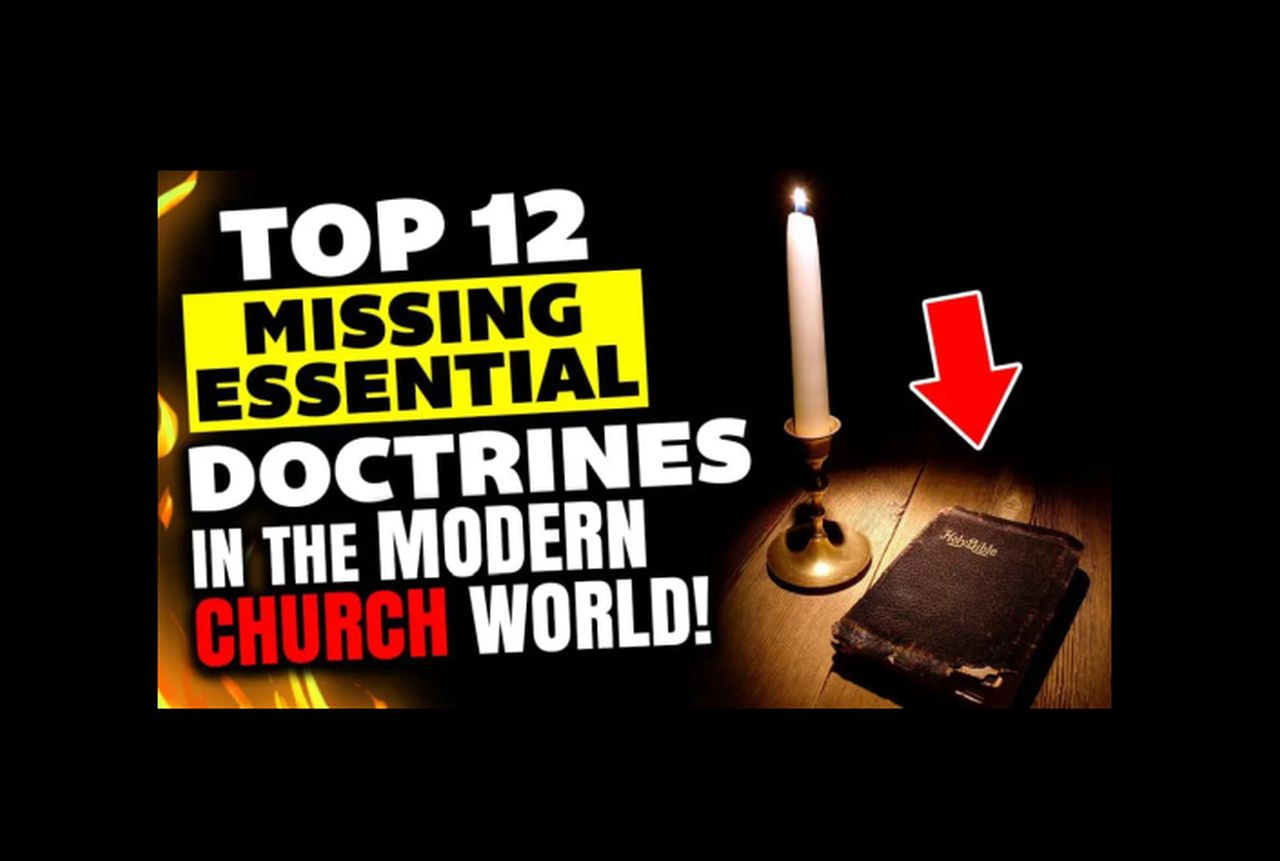
Abiding
The Book of 2 Peter Narrated [podcast]

Chapter 1
Simon Peter, a servant and an apostle of Jesus Christ, to them that have obtained like precious faith with us through the righteousness of God and our Saviour Jesus Christ: 2 Grace and peace be multiplied unto you through the knowledge of God, and of Jesus our Lord, 3 according as his divine power hath given unto us all things that pertain unto life and godliness, through the knowledge of him that hath called us to glory and virtue: 4 whereby are given unto us exceeding great and precious promises: that by these ye might be partakers of the divine nature, having escaped the corruption that is in the world through lust.
5 And beside this, giving all diligence, add to your faith virtue; and to virtue knowledge; 6 and to knowledge temperance; and to temperance patience; and to patience godliness; 7 and to godliness brotherly kindness; and to brotherly kindness charity. 8 For if these things be in you, and abound, they make you that ye shall neither be barren nor unfruitful in the knowledge of our Lord Jesus Christ. 9 But he that lacketh these things is blind, and cannot see afar off, and hath forgotten that he was purged from his old sins. 10 Wherefore the rather, brethren, give diligence to make your calling and election sure: for if ye do these things, ye shall never fall: 11 for so an entrance shall be ministered unto you abundantly into the everlasting kingdom of our Lord and Saviour Jesus Christ.
12 Wherefore I will not be negligent to put you always in remembrance of these things, though ye know them, and be established in the present truth. 13 Yea, I think it meet, as long as I am in this tabernacle, to stir you up by putting you in remembrance; 14 knowing that shortly I must put off this my tabernacle, even as our Lord Jesus Christ hath shewed me. 15 Moreover I will endeavour that ye may be able after my decease to have these things always in remembrance. 16 For we have not followed cunningly devised fables, when we made known unto you the power and coming of our Lord Jesus Christ, but were eyewitnesses of his majesty. 17 For he received from God the Father honour and glory, when there came such a voice to him from the excellent glory, This is my beloved Son, in whom I am well pleased. 18 And this voice which came from heaven we heard, when we were with him in the holy mount. 19 We have also a more sure word of prophecy; whereunto ye do well that ye take heed, as unto a light that shineth in a dark place, until the day dawn, and the day star arise in your hearts: 20 knowing this first, that no prophecy of the scripture is of any private interpretation. 21 For the prophecy came not in old time by the will of man: but holy men of God spake as they were moved by the Holy Ghost
Chapter 2
But there were false prophets also among the people, even as there shall be false teachers among you, who privily shall bring in damnable heresies, even denying the Lord that bought them, and bring upon themselves swift destruction. 2 And many shall follow their pernicious ways; by reason of whom the way of truth shall be evil spoken of. 3 And through covetousness shall they with feigned words make merchandise of you: whose judgment now of a long time lingereth not, and their damnation slumbereth not. 4 For if God spared not the angels that sinned, but cast them down to hell, and delivered them into chains of darkness, to be reserved unto judgment; 5 and spared not the old world, but saved Noah the eighth person, a preacher of righteousness, bringing in the flood upon the world of the ungodly; 6 and turning the cities of Sodom and Gomorrha into ashes condemned them with an overthrow, making them an ensample unto those that after should live ungodly; 7 and delivered just Lot, vexed with the filthy conversation of the wicked: 8 (for that righteous man dwelling among them, in seeing and hearing, vexed his righteous soul from day to day with their unlawful deeds;) 9 the Lord knoweth how to deliver the godly out of temptations, and to reserve the unjust unto the day of judgment to be punished: 10 but chiefly them that walk after the flesh in the lust of uncleanness, and despise government. Presumptuous are they, selfwilled, they are not afraid to speak evil of dignities. 11 Whereas angels, which are greater in power and might, bring not railing accusation against them before the Lord. 12 But these, as natural brute beasts, made to be taken and destroyed, speak evil of the things that they understand not; and shall utterly perish in their own corruption; 13 and shall receive the reward of unrighteousness, as they that count it pleasure to riot in the day time. Spots they are and blemishes, sporting themselves with their own deceivings while they feast with you; 14 having eyes full of adultery, and that cannot cease from sin; beguiling unstable souls: an heart they have exercised with covetous practices; cursed children: 15 which have forsaken the right way, and are gone astray, following the way of Balaam the son of Bosor, who loved the wages of unrighteousness; 16 but was rebuked for his iniquity: the dumb ass speaking with man’s voice forbad the madness of the prophet.
17 These are wells without water, clouds that are carried with a tempest; to whom the mist of darkness is reserved for ever. 18 For when they speak great swelling words of vanity, they allure through the lusts of the flesh, through much wantonness, those that were clean escaped from them who live in error. 19 While they promise them liberty, they themselves are the servants of corruption: for of whom a man is overcome, of the same is he brought in bondage. 20 For if after they have escaped the pollutions of the world through the knowledge of the Lord and Saviour Jesus Christ, they are again entangled therein, and overcome, the latter end is worse with them than the beginning. 21 For it had been better for them not to have known the way of righteousness, than, after they have known it, to turn from the holy commandment delivered unto them. 22 But it is happened unto them according to the true proverb, The dog is turned to his own vomit again; and the sow that was washed to her wallowing in the mire.
Chapter 3
This second epistle, beloved, I now write unto you; in both which I stir up your pure minds by way of remembrance: 2 that ye may be mindful of the words which were spoken before by the holy prophets, and of the commandment of us the apostles of the Lord and Saviour: 3 knowing this first, that there shall come in the last days scoffers, walking after their own lusts, 4 and saying, Where is the promise of his coming? for since the fathers fell asleep, all things continue as they were from the beginning of the creation. 5 For this they willingly are ignorant of, that by the word of God the heavens were of old, and the earth standing out of the water and in the water: 6 whereby the world that then was, being overflowed with water, perished: 7 but the heavens and the earth, which are now, by the same word are kept in store, reserved unto fire against the day of judgment and perdition of ungodly men.
8 But, beloved, be not ignorant of this one thing, that one day is with the Lord as a thousand years, and a thousand years as one day. 9 The Lord is not slack concerning his promise, as some men count slackness; but is longsuffering to us-ward, not willing that any should perish, but that all should come to repentance. 10 But the day of the Lord will come as a thief in the night; in the which the heavens shall pass away with a great noise, and the elements shall melt with fervent heat, the earth also and the works that are therein shall be burned up.
11 Seeing then that all these things shall be dissolved, what manner of persons ought ye to be in all holy conversation and godliness, 12 looking for and hasting unto the coming of the day of God, wherein the heavens being on fire shall be dissolved, and the elements shall melt with fervent heat? 13 Nevertheless we, according to his promise, look for new heavens and a new earth, wherein dwelleth righteousness.
14 Wherefore, beloved, seeing that ye look for such things, be diligent that ye may be found of him in peace, without spot, and blameless. 15 And account that the longsuffering of our Lord is salvation; even as our beloved brother Paul also according to the wisdom given unto him hath written unto you; 16 as also in all his epistles, speaking in them of these things; in which are some things hard to be understood, which they that are unlearned and unstable wrest, as they do also the other scriptures, unto their own destruction. 17 Ye therefore, beloved, seeing ye know these things before, beware lest ye also, being led away with the error of the wicked, fall from your own stedfastness. 18 But grow in grace, and in the knowledge of our Lord and Saviour Jesus Christ. To him be glory both now and for ever. Amen.
Bible Books Narrated | 100’s of Christ-centered Podcasts | Support
Going deeper begins with a foundational knowledge of the book of origins – the book of Genesis. In fact, a sound, solid biblical foundation begins with knowing and understanding the book of Genesis. What is the Book of Genesis about summary? The Book of Genesis, the first book of the Hebrew Bible and the Christian Old Testament, is an essential component of the foundation to be built in the life of every disciple of Christ.
Bible – Word of God | Bible School Modules (free) | Hundreds of Scripture-Rich edifying audios here.
Support | STORE | Podcasts | Jail/Prison Ministry | Mexico Mission here | 100’s of Christ-centered Podcasts | Bible Books Narrated | Bible Study Helps | The Book of James Narrated [podcast] | The Book of Revelation Narrated [podcast] | Colossians Overview [podcast]
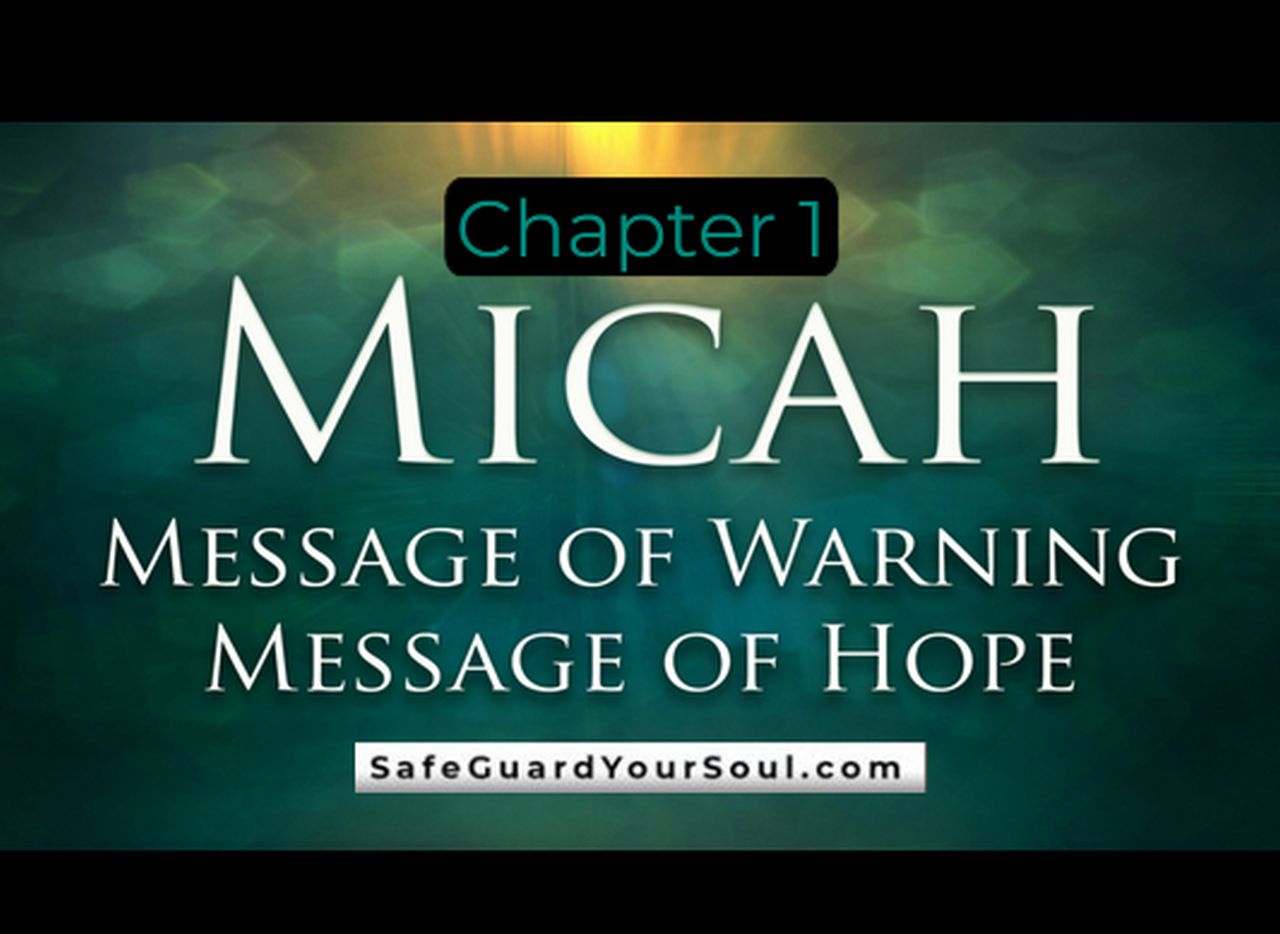

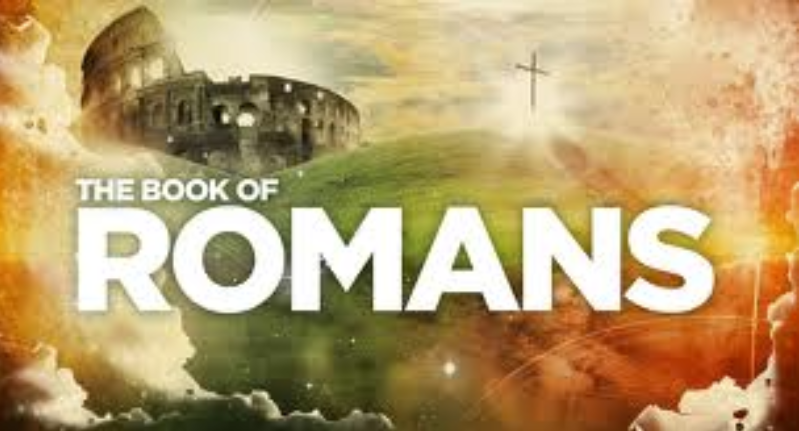
Apostasy
The Sensual Seduction and Solicitation of the Modern Church!

Spiritual Seduction is a Reality!
“How that they told you there should be mockers in the last time, who should walk after their own ungodly LUSTS. 19 These be they who separate themselves, SENSUAL, having not the Spirit.” Jude 18-19
Of this passage, one disciple notes:
“The dictionary defines sensuality this way: sen•su•al (sen shu – al) adj.
1. Relating to or affecting any of the senses or a sense organ; sensory.
2. a. Of, relating to, given to, or providing gratification of the physical and especially the sexual appetites.
b. Suggesting sexuality; voluptuous.
c. Physical rather than spiritual or intellectual.
d. Lacking in moral or spiritual interests; worldly.
“The Holy Spirit here warns us concerning the Last Times when people would be Sensual not having the Spirit. These are people who would enter the churches not simply people outside the churches; else we would not need to be warned against them. It is commonly felt that “Sensual” always is synonymous with sexuality; however the context here is with regards to the physical ‘senses’—’Feelings’ and ‘sensations’. We have five senses; Sight, Sound, Touch, Taste and Scent. We are told that we ‘walk by faith’, as opposed to walking ‘by sight’. -2 Corinthians 5:7 ‘For we walk by faith, not by sight’. This is simply a reminder that our lives must not be governed by our feelings, our senses. Back in the sixties one of the philosophies of the world was always, ‘If it feels good, it IS good’. Another question that is often asked is, ‘Is this so wrong if it feels so right?'”
“There is a way which seemeth right unto a man, but the end thereof are the ways of death.” Proverbs 14:12
Most of the social media messages tell us, continually remind us that God loves us but nearly none of them inform us that the God who loves us, sent His Son to die on a cross for us, and requires and commands us to be “crucified with Christ.” (Galatians 2:20; Romans 8:29; Colossians 3:3) Beware of the half-truth false gospel of today! We must walk in the original Gospel – all of it – if we are to escape and not be “Led away with the error of the wicked.” (2 Peter 3:17)
False prophets will speak about seeking the supposed presence of God yet never preach on the cross, personal holiness, or obedience. Beware.
The only way we can prevent being deceived is by astute study and belief of God’s Word whereby we are able to rightly divide His Word of truth (2 Timothy 2:15).
One saint writes: “Throughout the whole world error and truth travel the same highways, work in the same fields and factories, attend the same churches, fly in the same planes and shop in the same stores. So skilled is error at imitating truth that the two are constantly being mistaken for each other. It takes a sharp eye these days to know which brother is Cain and which is Abel!”
Those who do not submit to God in their daily personal life, calling upon the LORD to circumcise and purify their hearts, will be caught up in and snared by sensuality. They will live by the senses, the flesh, and not the Spirit and be sent by God Himself a “strong delusion” so that they “believe a lie” and are ultimately “damned.” (2 Thessalonians 2:9-12)
Some seek the rush of a sensual feeling instead of the reality of the risen Savior – through the cross life!
“I know thy works, that thou hast a name that thou livest, and art dead.” Revelation 3:1
HAVE you noticed how these new lightweight “churches” brag about their “Top 10 Core Values”? What a joke! In other words they pick out 10 socially acceptable things most people will like and that’s their top 10. And they do this instead of simply announcing that they endeavor to adhere to the whole of the Bible. KJB. Lame.
The primary way God leads His NEW Testament church is by the Holy Scriptures and not self-appointed false prophets and false apostles (2 Timothy 3:16-17; Psalms 119:105; 2 Peter 1:19-21, etc.).
Those who pretend to be today’s prophets aren’t grounded in the written Word! RUN!
Scripture often warns us of those who would seduce us away from Christ – just as an adulterous woman seeks to seduce a husband away from his wife!
“For false Christs and false prophets shall rise, and shall shew signs and wonders, to seduce, if it were possible, even the elect.” Mark 13:22
“These things have I written unto you concerning them that seduce you.” 1 John 2:26
“Not Withstanding I have a few things against thee, because thou sufferest that woman Jezebel, which calleth herself a prophetess, to teach and to seduce my servants to commit fornication, and to eat things sacrificed unto idols.” Revelation 2:20
“And this I say (here’s the reason I write you!), lest any man should beguile you with enticing words … As ye have therefore received Christ Jesus the Lord, so walk ye in him: 7 Rooted and built up in him, and stablished in the faith, as ye have been taught, abounding therein with thanksgiving. 8 Beware lest any man spoil you through philosophy and vain deceit, after the tradition of men, after the rudiments of the world, and not after Christ. 9 For in him dwelleth all the fulness of the Godhead bodily. 10 And ye are complete in him, which is the head of all principality and power.” Colossians 2:4, 8-10
“Church” attendance was never ordained by God to displace, to replace the personal study of His Word. Church membership endears the people, the prey, to the organization and it’s leaders and members and not to the LORD Himself. This has displaced the individual priesthood and fellowship God ordained for each and every individual believer. Lots of people replace personally diligently seeking the LORD with going to “church.” They either merely dabble with or don’t even personally study God’s Word for themselves and yet are members in good standing at these local entertainment centers many call “church.” The pastors have sold them on this lifestyle by promoting and emphasizing church membership and not discipleship.
Seminaries are wolf factories. The protestant seminaries were infiltrated by the vatican jesuits decades ago and are now marketing schools producing greedy wolves who set up church busine$$ to market the gospel – which is the meaning of taking the name of the LORD in vain! (Exodus 20:7). Satan’s Seminaries Exposed!
“Thou shalt not take the name of the LORD thy God in vain; for the LORD will not hold him guiltless that taketh his name in vain.” Exodus 20:7
To take the name of the LORD in vain is to use His name for any other purpose except true, honest worship of Him! Those who use the name of Jesus to make dishonest gain by exploiting people for their own self-serving purposes, are not guiltless before a holy God!
Many Seek the Presence and not the Person, the Face of Jesus Christ!
If you name the name of Christ, this writer, this disciple would encourage you to honestly search out this whole “seeking the presence” cult. Contemplative prayer and spiritual formation are a cheap counterfeit for a real walk with God. They substitute a real walk with Jesus wherein He commands us to seek and obey HIM, not merely His presence. When we do seek HIM and obey Him, He promises to manifest Himself to those who obey His Word (John 14:21-23).
Perhaps those who seek the presence of God and not the face of God, are simply looking for some kind of feeling. They have not truly repented and are self-willed and living out of a self-serving agenda.
God plainly told us that he will only give His presence to those who know, seek, and obey Him – and not those who merely seek His presence (John 14:21- 23).
Those who seek His HAND instead of His FACE are completely self-serving, cross-less idolaters!
“Seek the LORD and his strength, seek his FACE continually.” 1 Chronicles 16:11
WE seek the PERSON of Christ and not merely the PRESENCE of Him. Beware of this deception saints. When we seek the FACE of the LORD, He will fill us with His Spirit and make His abode in and with us. Our part is to worship and obey Him and not to merely seek His presence. Many who are not seeking to know the LORD seek a feeling instead of seeking the face of the LORD! Beware of this idolatrous spiritual adultery. These same people are not studying and grounded in the Word or the cross of Christ.
Let’s look at who Jesus says truly loves Him:
“He that hath my commandments, and keepeth them, he it is that loveth me: and he that loveth me shall be loved of my Father, and I will love him, and will manifest myself to him. … 23 Jesus answered and said unto him, If a man love me, he will keep my words: and my Father will love him, and we will come unto him, and make our abode with him.” John 14:21, 23
In this passage above, Jesus teaches us that His presence, He and His Father, abide in the lives of those who are His (born again) and presently obeying Him.
Those who love Jesus seek His Word and obey Him. These true disciples, God manifests Himself to. These are those He chooses to make His abode with and not those who simply seek to exploit the LORD for a feeling they call His presence. Beware!
Many today seek a feeling, a sensation and not the Savior! They’ve allowed the false leaders of today to mislead them.
“Having a form of godliness, but denying the power thereof: from such turn away … Ever learning, and never able to come to the knowledge of the truth.” 2 Timothy 3:5,7
Those not submitted to the authority, the power of God which is Christ, have only a mere “form of godliness.” As was specifically foretold, today we see the fulfillment of Paul’s warning where we have so many with a mere “form of godliness.” In their daily lives they deny, reject “the power” or the authority of Jesus to reign. When Jesus reigns in a life, His cross is central to that person’s life. They are grounded in the cross – the crucified life – without exception.
Yet today we see some who never grow after being saved because false ministries have intercepted them from the LORD. Those false prophet ministries emphasize any and everything except Jesus Christ!
The vast majority of today’s pastors are sensually soliciting their prey to worship at the altar of self and not soundly grounding their audience in the cross and sound doctrine which is God’s written Word!
So many run to pack themselves in with the herd, to get turned on in what is supposed to be praise and worship. Some of it is a hollow sound and mere lip service.
“This people draweth nigh unto me with their mouth, and honoureth me with their lips; but their heart is far from me.” Matthew 15:8
The hoards consist of the same souls who do not daily, diligently seek the LORD in His Word and a set apart life of prayer (Matthew 6:6; 2 Timothy 2:15). They do not live a crucified life! (Luke 9:23-24; Galatians 2:20, 24, etc.) They are “Ever learning, and never able to come to the knowledge of the truth” because they are not being grounded in the Word of God.
The powder puff pansies use fake news “bibles” instead of the KING JAMES BIBLE.
Any leader not getting you into God’s Word for yourself, is absolutely a wolf! Run!
“Study to shew thyself approved unto God, a workman that needeth not to be ashamed, rightly dividing the word of truth.” 2 Timothy 2:15
The Witchcraft of the Modern Church!
There is no instance in the 27 books of the New Testament canon where God’s people gathered to be entertained and enamored in what the modern church falsely claims to be praise and worship.
Those false ministries who stage these events are appealing to your natural senses, your emotions. They are on a marketing journey – to sell their prey into a community and not to root them in Christ!
Proof? Name 5 people you know who attend such false churches who can quote just 5 Bible verses they’ve memorized. Case closed!
Seeking and Knowing the LORD Himself!
“That I may know him, and the power of his resurrection, and the fellowship of his sufferings, being made conformable unto his death;” Philippians 3:10
Jesus told us that the chief purpose that He came is that we might know Him and the Father. Such a cardinal, central Gospel truth is never heard in modern apostate churches today!
“And this is life eternal (the whole divine reason for it), that they might know thee the only true God, and Jesus Christ, whom thou hast sent.” John 17:3
The cross reveals your sin, and God’s love, not how wonderful you are! Repent!
Beware of this “knowing the Tangible Presence” idea. Spiritual formation and contemplative prayer is heresy! These heretical systems are rooted in the occult and perpetrated by “many false prophets” which Jesus specifically warns us “shall deceive many” (Matthew 24:11). Christ’s true disciples today live BY FAITH not feelings (2 Corinthians 5:7). True followers of Jesus live by the Word of God and not by their senses, their feelings (Psalms 119:105; 2 Timothy 3:16-17). Yet, many today are being led to conjure up a feeling, not realizing they are summoning up evil spirits that pose as the Holy Spirit of God – another Jesus, another gospel, another spirit (2 Corinthians 11:2-4, 11-15). Those who seek an experience instead of seeking the face of the LORD, will be misled by evil spirits and false prophets (1 Chronicles 16:11). Many today are sensual and not truly spiritual in the biblical sense. There is no cross at the center of their lives (Colossians 3:3). Their daily life is not rooted in Christ – the cross! They have been led by the self-serving wolves of today’s modern church to get addicted to a feeling instead of growing in grace and obeying the LORD and Savior Himself. Self-idolatry. They love to go do what some falsely call “praise and worship” to get that feeling. Praise and worship are biblical and yet, not what many have made it out to be. There are many houses of worship if you will, which do not have Christ, the cross, at the center and therefore are not worshiping the LORD by teaching the pure, sound doctrine of the Word of God – the King James Bible. These ravenous wolves know how the church busine$$ works and so they front with a good band, good music, using young, gifted people as their pawns as they stage their deceptive exploitation, hiding behind that good music! Beware saints.
Wolves entertain goats and market their church busine$$ to grow, to gain nickels, noses, and numbers. True under-shepherds ground God’s people in the daily cross, in the fear of God, and in the sound doctrine which is the written Word of God (2 Timothy 2:15; 3:16-17; 4:2-4; 2 Peter 1:19-21, etc.).
This is a big part of the end time deception we were often warned of….
“Now the Spirit speaketh expressly, that in the latter times some shall depart from the faith, giving heed to seducing spirits, and doctrines of devils; 2 Speaking lies in hypocrisy; having their conscience seared with a hot iron;” 1 Timothy 4:1-2
Have you ever been part of this type “church”? I sure have. Think about it. If you’re like myself, you enjoyed the praise and worship (to some degree) and yet, were left empty due to the lame “word” and lack of biblical teaching. Can anyone relate?
In any given town in America, one can search high and low, near and far, and never find even one pastor who is true to God. Is this not a fulfillment of prophecy?
“Behold, the days come, saith the Lord GOD, that I will send a famine in the land, not a famine of bread, nor a thirst for water, but of hearing the words of the LORD:” Amos 8:11
“Preach the word; be instant in season, out of season; reprove, rebuke, exhort with all longsuffering and doctrine. 3 For the time will come when they will not endure sound doctrine; but after their own lusts shall they heap to themselves teachers, having itching ears; 4 And they shall turn away their ears from the truth, and shall be turned unto fables.” 2 Timothy 4:2-4
If you still believe that most pastors today are true, stay deeply in God’s Word daily and your discernment will change. You will begin to realize that over 90% of today’s pastors are “accursed” wolves and we know this because they do not preach the original Gospel that Christ and His holy apostles preached and gave us (Jude 3).
Modern church false gospel …. No repentance, no sin, No judgment, no holiness, no cross, No warnings to beware of false prophets and heresies, no return of Christ for a spotless – sinless – bride, no Christology (study of Christ!) …
Those who preach any other gospel other than the original and complete Gospel of Jesus Christ, are “accursed.”
“I marvel that ye are so soon removed from him that called you into the grace of Christ unto another gospel: 7 Which is not another; but there be some that trouble you, and would pervert the gospel of Christ. 8 But though we, or an angel from heaven, preach any other gospel unto you than that which we have preached unto you, let him be accursed. 9 As we said before, so say I now again, If any man preach any other gospel unto you than that ye have received, let him be accursed.” Galatians 1:6-9
Then Paul reveals why false leaders do not preach the original, the real and whole Gospel of Christ – because they love self and therefore fear and cater to mere men and not Jesus Christ!
“For do I now persuade men, or God? or do I seek to please men? for if I yet pleased men, I should not be the servant of Christ.” Galatians 1:10
Support | STORE | Podcasts | Jail/Prison Ministry | Mexico Mission here | All Ministry Updates | More on Assurance here | Because You Care Page | The Greatest of these is Charity | Be Ready in the Morning [podcast] | The Sure Mercies of David [podcast] | That Repentance and Remission of Sins should be Preached [podcast] | At His Feet | Knowing God | The Cross Life | 100’s of Christ-centered Scripture-rich Podcasts | Christology = the Study of Christ


Abiding
WHY were 24,000 of God’s People Killed at Peor? [podcast]

“Baal was most often portrayed as a strong warrior and was considered the god of storms and fertility. He was said to rule from his palace atop Mount Zaphon, the highest peak in Syria. Baal is referenced several times in the Bible’s Old Testament, where he is depicted as the main rival of the god of the Israelites.”
We must understand that God is severe in His judgment of rebels of which there are “many” who claim they are saved. Eternal damnation awaits all rebels (Matthew 7:13-23, etc.).
“Behold therefore the goodness and severity of God: on them which fell, severity; but toward thee, goodness, if thou continue in his goodness: otherwise thou also shalt be cut off.” Romans 11:22
DIVINE JUDGMENT, the “severity of God,” IS NOT GOING AWAY JUST BECAUSE YOU OR SOME FAKE PREACHER IGNORES IT!
Christians avoid doing as did the Israelites when they worshipped baal by worshipping the LORD, the Father and Jesus Christ “in spirit and in truth.” (John 4:23-24; 1 Corinthians 8:6; 1 John 1:3) This begins with fresh and complete repentance, confession of all sin, and denouncing of all dependence, idolatry, all pagan practices like yoga and mantra chanting, etc., and by understanding that truly worshiping the LORD, the one true God, is based on sincere loyalty to Him and not to get things from Him like success or possession in this fleeting world. The heart of the disciple of Jesus must be circumcised perpetually and this is happening as we examine our hearts for idols, the daily crucified life, living a life of prayer, setting boundaries against temptations, and being wholly accountable to the LORD, while avoiding syncretism (mixing pagan rituals with Christian practice) and prioritizing God’s Word.
Deuteronomy 4:1-10
 24,000 of God’s own people, men, departed from obeying the instruction, the standard, the Word of God and were destroyed. They partook in the soul damning sin of fornication.
24,000 of God’s own people, men, departed from obeying the instruction, the standard, the Word of God and were destroyed. They partook in the soul damning sin of fornication.
“Now therefore hearken, O Israel, unto the statutes and unto the judgments, which I teach you, for to do them, that ye may live, and go in and possess the land which the LORD God of your fathers giveth you. 2 Ye shall not add unto the word which I command you, neither shall ye diminish ought from it, that ye may keep the commandments of the LORD your God which I command you. 3 Your eyes have seen what the LORD did because of Baalpeor: for all the men that followed Baalpeor, the LORD thy God hath destroyed them from among you. 4 But ye that did cleave unto the LORD your God are alive every one of you this day. 5 Behold, I have taught you statutes and judgments, even as the LORD my God commanded me, that ye should do so in the land whither ye go to possess it. 6 Keep therefore and do them; for this is your wisdom and your understanding in the sight of the nations, which shall hear all these statutes, and say, Surely this great nation is a wise and understanding people. 7 For what nation is there so great, who hath God so nigh unto them, as the LORD our God is in all things that we call upon him for? 8 And what nation is there so great, that hath statutes and judgments so righteous as all this law, which I set before you this day? 9 Only take heed to thyself, and keep thy soul diligently, lest thou forget the things which thine eyes have seen, and lest they depart from thy heart all the days of thy life: but teach them thy sons, and thy sons’ sons; 10 Specially the day that thou stoodest before the LORD thy God in Horeb, when the LORD said unto me, Gather me the people together, and I will make them hear my words, that they may learn to fear me all the days that they shall live upon the earth, and that they may teach their children.” Deuteronomy 4:1-10
Departing from the pure Word of God always leads to sinful living as was the case with 24,000 of God’s people’s worship at Baal Peor.
“And Jesus answered him, saying, It is written, That man shall not live by bread alone, but by every word of God.” Luke 4:4
In Deuteronomy 4, Moses warns God’s people not to change or depart from the LORD’s Word and brings up the example, reminds the people of God’s judgment upon 24,000 of His own people for doing so (Numbers 25).
Of the worship of Baal-Peor, one writer notes:
“Yet what was this worship of Baal-Peor and why did it draw such wrath from God? Baal-Peor is a Moabite god who was worshipped with obscene rituals. The name means ‘Lord of the Opening’ from Baal meaning owner/ husband and Peor coming from pa’ar meaning ‘open wide.’ ‘I found Israel Like grapes in the wilderness; I saw your fathers As the firstfruits on the fig tree in its first season. But they went to Baal Peor, And separated themselves to that shame; They became an abomination like the thing they loved.’ (Hosea 9:10) The worship of Baal-Peor IS an abomination. Notice that those who join themselves to Baal-Peor also ‘become’ an abomination before the Lord.”
Every person who has an idol, just one, has demons (Deuteronomy 32:17; 1 Corinthians 10:19-21). Repent now. Follow Jesus.
 In Deuteronomy 4:3, Moses brings back to the memory of God’s people the judgment that fell upon the 24,000 of His own people for their idolatry and fornication. This idolatrous abomination is recorded in Numbers 25.
In Deuteronomy 4:3, Moses brings back to the memory of God’s people the judgment that fell upon the 24,000 of His own people for their idolatry and fornication. This idolatrous abomination is recorded in Numbers 25.
“And, behold, one of the children of Israel came and brought unto his brethren a Midianitish woman in the sight of Moses, and in the sight of all the congregation of the children of Israel, who were weeping before the door of the tabernacle of the congregation. 7 And when Phinehas, the son of Eleazar, the son of Aaron the priest, saw it, he rose up from among the congregation, and took a javelin in his hand; 8 And he went after the man of Israel into the tent, and thrust both of them through, the man of Israel, and the woman through her belly. So the plague was stayed from the children of Israel. 9 And those that died in the plague were twenty and four thousand.” Numbers 25:6-9
Dear reader, camp out on Numbers 25, the whole chapter. Your life is not complete without this vital component of divine truth.
Of Baal, one source notes:
Baal was a major ancient West Semitic storm and fertility god, meaning “lord” or “master,” prominent in Canaanite and Phoenician cultures, associated with rain, thunder, and agriculture, and often depicted with a thunderbolt. He was seen as a powerful deity, central to life, but became a focal point of biblical opposition as Israel’s worship of him (linked to lust and sometimes child sacrifice) was seen as idolatry against God, culminating in Elijah’s famous challenge on Mount Carmel. In later demonology, Baal (or Bael) is a powerful archdemon, and the name appears in various modern media as a demon or powerful entity.
In Ancient Religions
- Identity: A powerful god of fertility, weather (rain, lightning, wind), war, and kingship, often identified with the storm god Hadad.
- Worship: Widespread in the Levant (Canaan, Phoenicia) and beyond, with temples and rituals often involving cultic prostitution and sometimes human sacrifice, especially during droughts.
- Mythology: Key myths involve his battles with the sea god Yamm and the god of death Mot, representing natural cycles, and his dwelling on Mount Zaphon.
- Biblical Conflict: The Bible portrays Baal worship as a major temptation for Israelites, a rival to God, whose priests (including those of the Phoenician goddess Asherah/Astarte) were famously confronted by Elijah.
In Demonology & Culture
- Demon: In demonology, Bael (Baal) is a powerful archdemon, often the first of the three kings of Hell in grimoires, associated with invisibility and wisdom.
- Modern Media: The name appears in many forms, from Diablo and Dungeons & Dragons (Bhaal/Bael) to anime like Gundam and Welcome to Demon School! Iruma-kun, often as a powerful demon or god.”
Not one of us has lived perfectly holy and yet, at this moment in time, some will choose to truly repent and confess their sins and others will refuse (Proverbs 28:13). Eternity depends on true repentance which always, without fail, yields a changed life, a holy life (Matthew 3:7-10; Luke 13:3).
 “But as he which hath called you is holy, so be ye holy in all manner of conversation; 16 Because it is written, Be ye holy; for I am holy.” 1 Peter 1:15-16
“But as he which hath called you is holy, so be ye holy in all manner of conversation; 16 Because it is written, Be ye holy; for I am holy.” 1 Peter 1:15-16
These 24,000 Israelites were slain for their sin. God is still holy and “The wages of sin” is still death (Romans 6:23; Ezekiel 18:4).
“The soul that sinneth, it shall die.” Ezekiel 18:4
Zimri, a Simeonite (of the tribe of Simeon) was the Israelite whom Phinehas, grandson of Aaron, did slay for his utterly audacious display of sin, having brought the fornication in the middle of the camp of God’s people and even into the midst of their worship (Numbers 25:6, 14).
The great apostle brings this very incident to account 1 Corinthians 10:1-12 and warns New Testament saints never to partake lest they also be destroyed. The sins Paul cites form the natural acronym L.I.F.T.M. = lust, idolatry, fornication, tempting Christ, murmuring.
5 Soul Damning Sins Named! Learning from History! [podcast]
The spear of Phinehas must begin with ourselves – as we truly repent, lay down our lives in this world, and cut off the hand, pluck out the eye of any sin in our lives. The conscious eternal suffering, the severity of eternal judgment coming on any person who dies in sin is most profoundly declared by the Son of God Mark 9:43-49. Many of the new fake “bibles” removed this important passage.
The new “bibles” have lowered the standard and weakened many by their changing of God’s Word which Moses specifically warns us of in this main text, Deuteronomy 4.
“For I testify unto every man that heareth the words of the prophecy of this book, If any man shall add unto these things, God shall add unto him the plagues that are written in this book: 19 And if any man shall take away from the words of the book of this prophecy, God shall take away his part out of the book of life, and out of the holy city, and from the things which are written in this book.” Revelation 22:18-19
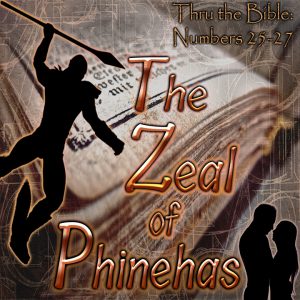 Departing from the Word of God, not obeying God on His stated terms, is the sure way to be weakened, destroyed, here and eternally. The LORD speaks often in His Word about this.
Departing from the Word of God, not obeying God on His stated terms, is the sure way to be weakened, destroyed, here and eternally. The LORD speaks often in His Word about this.
“Thus saith the LORD; Stand in the court of the LORD’S house, and speak unto all the cities of Judah, which come to worship in the LORD’S house, all the words that I command thee to speak unto them; diminish not a word:” Jeremiah 26:2
Each Man is Choosing to Drink from One Cup or the Other
Baal was ultimately Satan himself and involved things like sacrificing ones own child in exchange for being blessed by this false good. Jesus informed us that Satan has come “to steal, to kill, and to destroy.” (John 10:10).
As was the case at Baal Peor, Satan is behind every idol and so all idolatry is the worship of Satan.
“What say I then? that the idol is any thing, or that which is offered in sacrifice to idols is any thing? 20 But I say, that the things which the Gentiles sacrifice, they sacrifice to devils, and not to God: and I would not that ye should have fellowship with devils. 21 Ye cannot drink the cup of the Lord, and the cup of devils: ye cannot be partakers of the Lord’s table, and of the table of devils. 22 Do we provoke the Lord to jealousy? are we stronger than he?” 1 Corinthians 10:19-22
This passage above is speaking of the Baal Peor event and also to the temptation of Satan and his children today. Baal worship is alive and well today, calling God’s people to worship at the altar of devils, to partake is vile atrocities that separate one to Satan and away from the LORD. “No man can serve two masters” and anyone living in sin is not serving the one, true, holy LORD and Savior (Matthew 6:24)
“They joined themselves also unto Baalpeor, and ate the sacrifices of the dead. 29 Thus they provoked him to anger with their inventions: and the plague brake in upon them. 30 Then stood up Phinehas, and executed judgment: and so the plague was stayed. 31 And that was counted unto him for righteousness unto all generations for evermore.” Psalms 106:28-31
One writer notes:
“Baal Peor, or the Baal of Peor, was a local deity worshiped by the Moabites. When the Israelites, following Moses to the Promised Land, were in the vicinity of Peor, some of them fell into idolatry and worshiped Baal Peor. As a result of their sin, the men of Israel were judged by God.”
Baal Peor consisted of the worship of a false god, Satan, and fornication. Satan is behind the worship of all idols and such idolatry is filled with his devils/demons (1 Corinthians 10:19-22).
Modern day types of Baal Peor are the pornography, strip clubs, and everything in our society that has to do with any form of fornication. Movie and media are filled with such evil. The 24,000 who were destroyed in Moses day (Numbers 25), departed from the Word of God and the standards set forth there for holiness and the divine prohibition of sex outside of marriage between one man and one woman (1 Thessalonians 4:1-8). Read Deuteronomy 4 and Numbers 25 side by side.
“Furthermore then we beseech you, brethren, and exhort you by the Lord Jesus, that as ye have received of us how ye ought to walk and to please God, so ye would abound more and more. 2 For ye know what commandments we gave you by the Lord Jesus. 3 For this is the will of God, even your sanctification, that ye should abstain from fornication: 4 That every one of you should know how to possess his vessel in sanctification and honour; 5 Not in the lust of concupiscence, even as the Gentiles which know not God: 6 That no man go beyond and defraud his brother in any matter: because that the Lord is the avenger of all such, as we also have forewarned you and testified. 7 For God hath not called us unto uncleanness, but unto holiness. 8 He therefore that despiseth, despiseth not man, but God, who hath also given unto us his holy Spirit.” 1 Thessalonians 4:1-8
Before their blunder at Peor, after God brought them out of Egypt (the world), Israel was innocent. Judgment, destruction ensued their sin of all who participated. Today, we can witness that many who once worshipped God with a pure heart, have now turned away to the worship of idols involving fornication of all kinds. Those who would rebuke these backsliders could be liked unto Phinehas.
“I found Israel like grapes in the wilderness; I saw your fathers as the firstripe in the fig tree at her first time: but they went to Baalpeor, and separated themselves unto that shame; and their abominations were according as they loved.” Hosea 9:10
“I found Israel – The Lord speaks of himself in the person of a traveler, who unexpectedly in the wilderness finds a vine loaded with grapes; such love did God bear to Israel. Your fathers – Whom I brought out of Egypt. As the first – ripe – As the earliest ripe fruit of the fig – tree, which is most valued and desired. Separated themselves – Consecrated themselves to that shameful idol. Their abominations – Their idols, and way of worshipping them. As they loved – As they fancied.” John Wesley
Deuteronomy 4, Numbers 25, and 1 Corinthians 10 speak of the same event – the sin of God’s people in Baal worship at Peor and the consequent divine judgment that fell upon 24,000 of them. This is an eternal memorial for the judgment of God against all sin, namely idolatry and fornication.
“What say I then? that the idol is any thing, or that which is offered in sacrifice to idols is any thing? 20 But I say, that the things which the Gentiles sacrifice, they sacrifice to devils, and not to God: and I would not that ye should have fellowship with devils. 21 Ye cannot drink the cup of the Lord, and the cup of devils: ye cannot be partakers of the Lord’s table, and of the table of devils. 22 Do we provoke the Lord to jealousy? are we stronger than he?” 1 Corinthians 10:19-22
“To abstain from idol feasts was the clear duty of all Christians. By partaking of heathen sacrifices which were offered to demons, they became one with the demons and their votaries; just as in the Lord’s Supper we show our oneness not only with the Savior but with each other. It was clear, therefore, that the Corinthian Christians could not consistently partake of idol feasts and the Lord’s Supper. What an incentive is given here to frequent and reverent participation in the Lord’s Supper! It proclaims our union with Him and His people, and it gives us a distaste for all that is alien to its spirit.” FB Meyer
Those who depart from the standards set forth in God’s Word separate themselves to idols, to devils and are under divine judgment from the unchanging God (Malachi 3:6).
The Examples of Phinehas and Jael
Perhaps we can liken what Phinehas did in spearing the sin out of the camp of God’s people, with those who call His people to worship Him in Spirit and in truth and according to His pure, uncorrupted Word (Numbers 25:10-18; Psalms 12:6-7; Proverbs 30:5-6; Revelation 22:18-19). Phinehas boldly, courageously in the fear of God stood up and stamped out sin in the camp. The judgment ended. Those who stand and boldly, fearlessly declared the Word of God and call out sin among God’s people, are the Phinehas’ of our day. Do we have a Phinehas priesthood in our midst?
“Who will rise up for me against the evildoers? or who will stand up for me against the workers of iniquity?” Psalms 94:16
In Job 4:21-22; 5:24-27 we read about another bless-ed patriarch of the faith who stood up, who rose up against sin, slaying a wicked king.
In both the cases of Phinehas and Jael, these biblical accounts make specific record that the LORD greatly blessed these faithful followers of His, and their families, and He will do the same today for His true bold witnesses who stand against the evil of this late hour.
Support | STORE | Podcasts | Fornication | Holiness | Bible Version Issue – Fake Bibles Exposed | The Bible/Word of God | Fresh Start with God | Making Peace with God


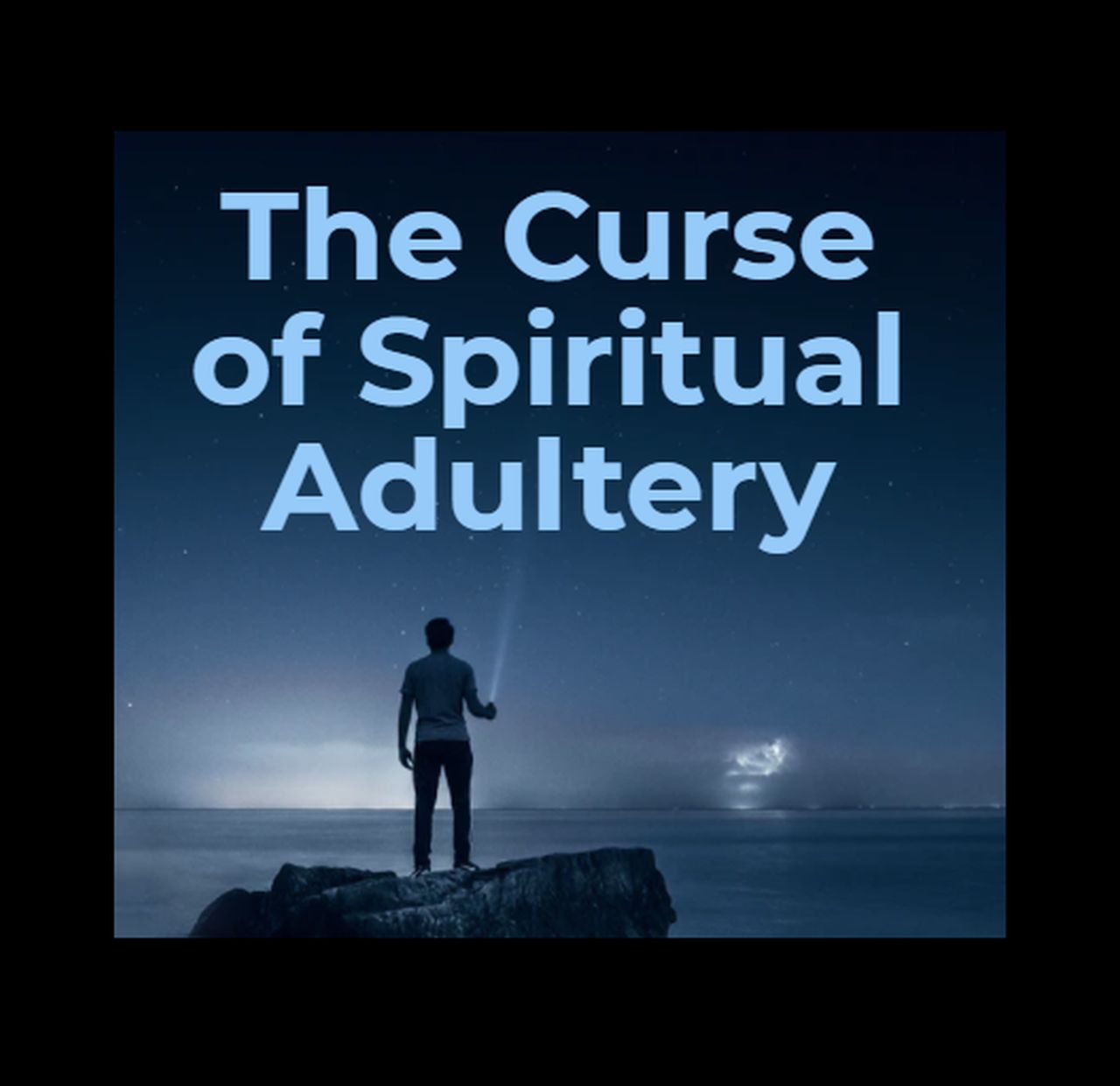
-

 America10 months ago
America10 months agoThe Drugging of America: The Pharmakeia Sorcery Deception [podcast]
-

 Articles2 years ago
Articles2 years agoChildren being Rescued in Tunnels: Happening Now – UPDATE!
-

 Articles8 years ago
Articles8 years agoSelf-Examination in Preparation for the Lord’s Return
-

 Apostasy2 years ago
Apostasy2 years agoSHOCKING List of False Prophets Most Believe are True


